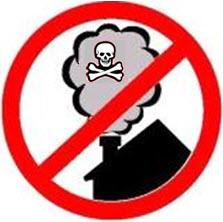There is a pervasive
myth that burning wood does not contribute to global climate change. The term often used is "
carbon neutral".
The myth has some basis in fact. Carbon dioxide (CO
2) produced by combustion gets recycled by trees to produce more wood and oxygen. Unfortunately, there are a number of flaws with the myth.
In order for wood burning to be truly carbon neutral, all of the CO
2 produced by burning a tree would have to be absorbed by another tree as fast as the CO
2 is produced. Obviously, this doesn't happen. It can take years for a new tree to grow to the size of the tree that was burned. This myth also assumes that every time a tree is burned, a new tree is planted and grows to maturity. Since
the net biomass of trees in the world is decreasing, it's unlikely that enough new trees are growing to balance the number of trees that are burned. How many people do you know who plant a new tree every time they use their fireplace? Even if we assume that the CO
2 is eventually absorbed by other trees, while it exists as free CO
2, it is a greenhouse gas, trapping heat from sunlight.
Some sites claim that a tree rotting in a forest produces the same amount of CO
2 as that tree would produce if it were burned. They ignore the reality that a tree can be burned in a short time, while that same tree would take many years to rot. A rotting tree produces no smoke. Some fallen trees act as
nurse logs, so many of their nutrients go directly into the formation of new trees. These nutrients would simply go up in smoke if the tree were burned.

